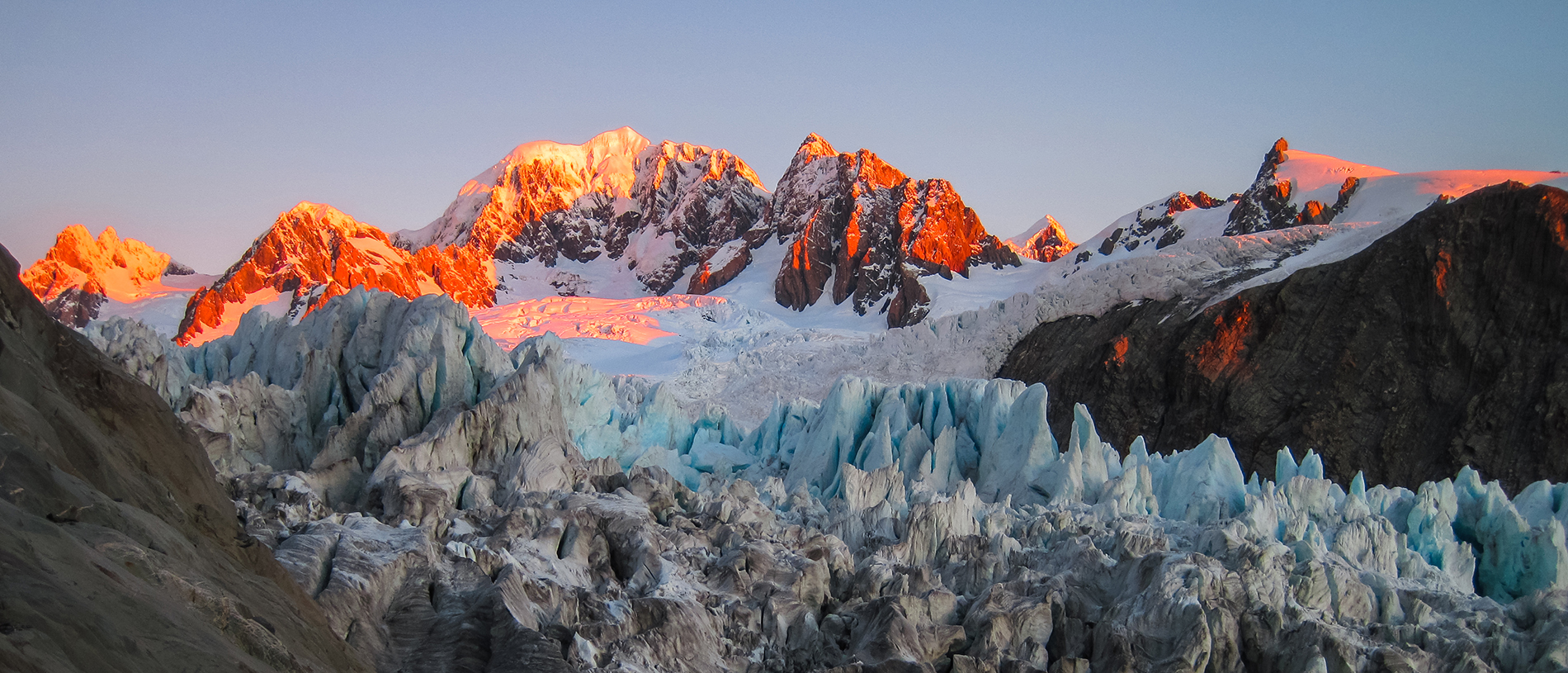
Westland Tai Poutini National Park: ancient ice
Westland Tai Poutini is an area of majestic primeval vistas: snow-capped mountains, glistening glaciers, forests, lakes, rivers and wetlands.

The ‘Hokitika Tower’ is one of the tallest human-made structures on the West Coast. From the 40-metre-high circular platform, the views are breathtaking.
There is a panoramic sweep across acres of native beech forest, the Southern Alps jagged spine, and off to the west, Lake Māhinapua, with a hint of the shimmering ocean swells marching across the distant Tasman Sea.
From this altitude even the giant podocarps, some up to 600 years old, are dwarfed by the Treetops Walkway tower.
On a lower level, the steel path out onto the cantilevered ‘Māhinapua Spring’, you’re at arms reach of the forest canopy, surrounded by ancient rimu, tōtara, kahikatea, and miro, whose ripe red berries are a favoured fruit to attract kererū.
The Māhinapua lake and surrounding forest have been a drawcard for tourists since the 1860s when gold miners came here on their days off. Boating regattas and picnics on the lakefront were regular outings for the pioneer settlers of Westland. By the end of that century, conservationists recognised its scenic values needed protection and the wetland was gazetted a mainland reserve in 1907. One of New Zealand’s earliest. This addition to the tourist experience safely allows wheelchair and baby-stroller access to venture in amongst the treetops, just as the walkway’s name suggests.
In nearby Hokitika, at The Gold Room on Tancred Street, owner Barry Rooney is at work crafting genuine natural West Coast nuggets into fine specimen jewellery. The alluvial gold still won from the district is some of the purest in the world, at between 94 and 98 percent, denoted by its rich yellow colouring. No two nuggets are identical either. The country’s largest, the “Honourable Roddy,” named after the then Minister of Mines, weighing in at a whopping 3.09 kilograms, was discovered at the nearby township of Ross in 1909. The prized nugget was gifted to King George V for his coronation, contributing a substantial lump of the West Coast for use in the crown jewels.
As Hokitika was founded on a gold rush in 1864, that “Roddy” nugget would hardly have been missed due to the amount of gold unearthed here. In the first year alone the easiest gold was found lying along a 50km stretch of the beach. Washed down the rivers it was mixed into the black, mineral-rich sand with three thousand hardy miners sifting the ‘royal metal’ through shuffle boxes and Long Tom’s trying to separate their winnings.
By 1867 Hokitika was the colony’s busiest port with some 37,000 gold seekers disembarking at Gibson’s Quay over three short years.
Dance halls and billiard-rooms, shooting-galleries and concert rooms, an opera house, barmaids, and ladies of ‘relaxed virtue’ all crowded along Hokitika’s golden mile, vying to entertain the hundreds of diggers.
Those were the days, causing some to claim it “the most rising place on earth” such was the town’s astonishing appearance from out of nowhere.
Today, Revell Street retains much of that frontier-town countenance and its wooden facades and wild west features. Fat Pipi Pizzas occupies one such rusticated premises. Their signature dish is a 140g of freshly caught whitebait (in the season) and egg folded on a pizza base with garlic, mozzarella and capers. Some travel over the mountains from Christchurch for no other reason than to taste this West Coast delicacy.
Around the corner on Hamilton St, opposite Hokitika’s Museum housed in the century-old Carniege Library building, is the lovingly restored Teichelmann’s B&B, the former home and medical practice of Ebenezer Teichelmann. Mountaineer, glass-plate photographer, conservationist and as his day job, Superintendent of Westland Hospital, the man known to Hokitika residents affectionately as “The Little Doctor” was a climbing dynamo with two peaks along the Main Divide named after him.
Present-day owner of Teichelmann’s, Brian Ward, frequently masquerades as the wee doctor, donning knickerbocker pants and stockings, fedora hat and tweed coat, he guides his guests and visitors around Hokitika’s heritage precinct offering an informative oral history of the goldfields capital in its heyday.
Though quieter now than during it’s bustling beginnings, there’s still plenty of riches to discover in this cool little riverside town.
Story by Peter James Quinn